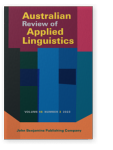Vol. 46:3 (2023) ► pp.373–394
Putting it into context
How exposure to rich and meaningful contexts can activate productive oral vocabulary
Developing L2 learners’ productive mastery of vocabulary is a challenging task. Recent research has called for greater attention to understanding how receptive vocabulary may be transformed for productive use (Schmitt, 2019). Using a design-based research methodology, this study investigated adult ESL learners’ productive oral vocabulary development through engaging them in a series of classroom workshops where they were exposed to nine target words in five different contexts. Findings suggest that such exposure to words combined with phonological form-focused elaboration facilitates the development of metalinguistic awareness, specifically the associations between grammatical patterns and word meaning, leading to subsequent productive use of target words. The paper contributes to the understanding that vocabulary training combining a focus on meaning with a focus on phonological and grammatical form may enhance form-meaning mapping, leading to productive oral vocabulary development.
Article outline
- 1.Introduction
- 2.Literature review
- 2.1Productive oral vocabulary
- 2.2Facilitating productive oral vocabulary learning in classroom environments
- 3.The present study
- 4.Methodology
- 4.1Site and participants
- 4.2Data and analysis
- 4.3The vocabulary workshop
- 5.Findings and discussion
- 5.1Vignette 1: Boris and target word shocked
- 5.2Vignette 2: Sofia and target phrase at each other’s throats
- 5.3Learning trajectories of other students
- 6.Conclusion
- Note
-
References
